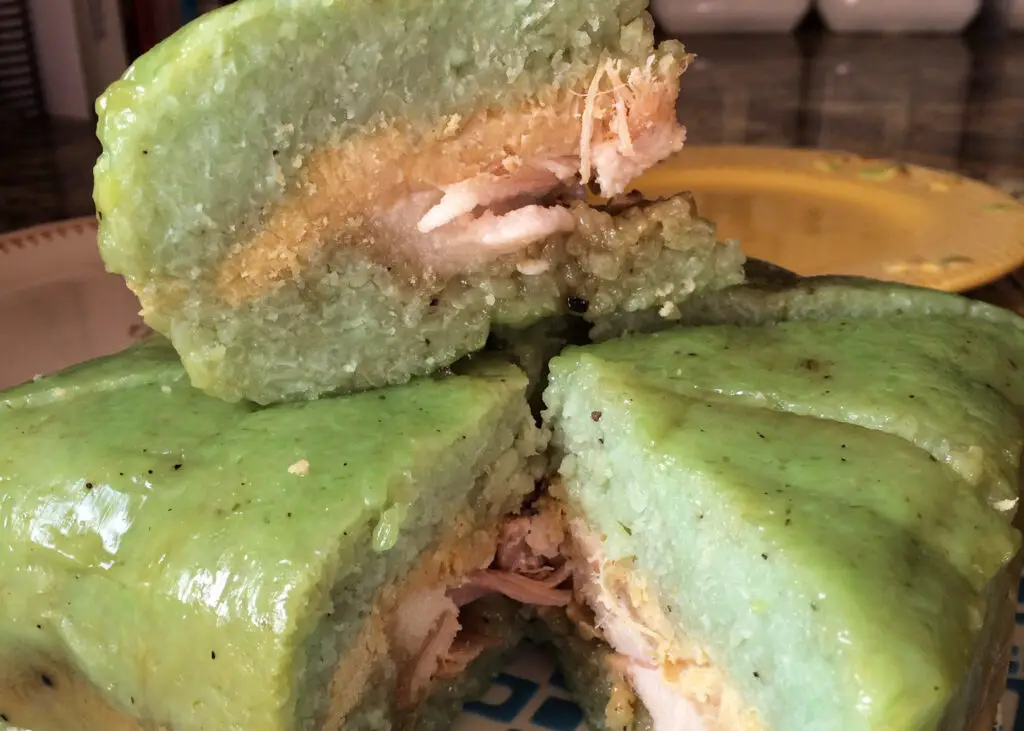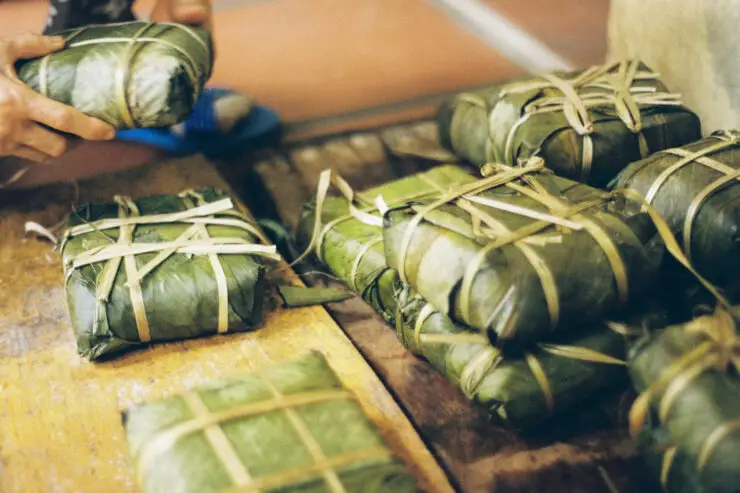As an Amazon Associate I earn from qualifying purchases. Please read the disclaimer for more info.
When it comes to Vietnamese cuisine, few dishes carry as much historical and cultural significance as Banh Chung. This traditional sticky rice cake, with its unique square shape and deep green hue, encapsulates the essence of Vietnam’s rich culinary heritage. Banh Chung is a testament to Vietnam’s vibrant culture, from its mythical origins to its regional variations.
The Legend of Banh Chung
As per Vietnamese folklore, the origin of Banh Chung can be traced back to the Hong Bang Dynasty. Legend has it that the 18th King Hung’s prince, Lang Lieu, invented this dish as an offering to his ancestors during Tet, the Vietnamese New Year.
The square shape of the cake, wrapped in green ‘dong’ leaves, symbolizes the Earth, reflecting Vietnam’s wet rice agriculture.
Vietnamese Cooking Essentials: 11 Best Vietnamese Cookbooks to Add to Your Kitchen

Key Ingredients and Their Significance
Banh Chung is made from simple yet meaningful ingredients. At its core, it consists of glutinous rice, mung beans, and pork. The glutinous rice represents the sky, the mung beans symbolize plants, and the meat represents animals.
All these elements are carefully wrapped in broad, green ‘dong’ leaves, giving the cake its characteristic look and infusing it with a distinct flavor.
Regional Variations
While Banh Chung is universally loved across Vietnam, regional differences have led to unique variations. In the North, it’s traditionally served with pickled onions during Tet. However, Banh Tet, a cylindrical cake variant in the South, is preferred and often paired with dried shrimp and pickled onion.
Ethnic groups like the San Diu people have their version called Banh Chung Gu. These regional twists add a layer of diversity to Banh Chung’s rich tapestry.
The Art of Making Banh Chung
Preparing Banh Chung is no less than an art, often involving the whole family. The process starts by soaking glutinous rice and mung beans overnight. The pork is marinated in a mix of spices. Then comes the intricate task of assembly.
A layer of rice is placed on the ‘dong’ leaves, followed by a layer of mung beans, the marinated pork, another layer of mung beans, and finally, topped with more rice.
This bundle is then wrapped tightly and boiled for up to 12 hours. The result is a beautifully compact cake, ready to be unwrapped and savored.
A Staple of Vietnamese Celebrations
More than just a food item, bánh chưng holds a special place in the hearts of the Vietnamese people. It’s an irreplaceable part of Tet celebrations and King Hung’s anniversary. For many Vietnamese, the act of making Banh Chung is a cherished time of family bonding as they gather to prepare, cook, and share this beloved dish.
Banh Chung is more than a traditional Vietnamese dish; it symbolizes the nation’s history, culture, and unity. Whether you’re a local relishing your grandmother’s recipe or a traveler trying it for the first time, every bite of Banh Chung offers a taste of Vietnam’s rich heritage.
If you enjoyed this article, you might like on of the following:

